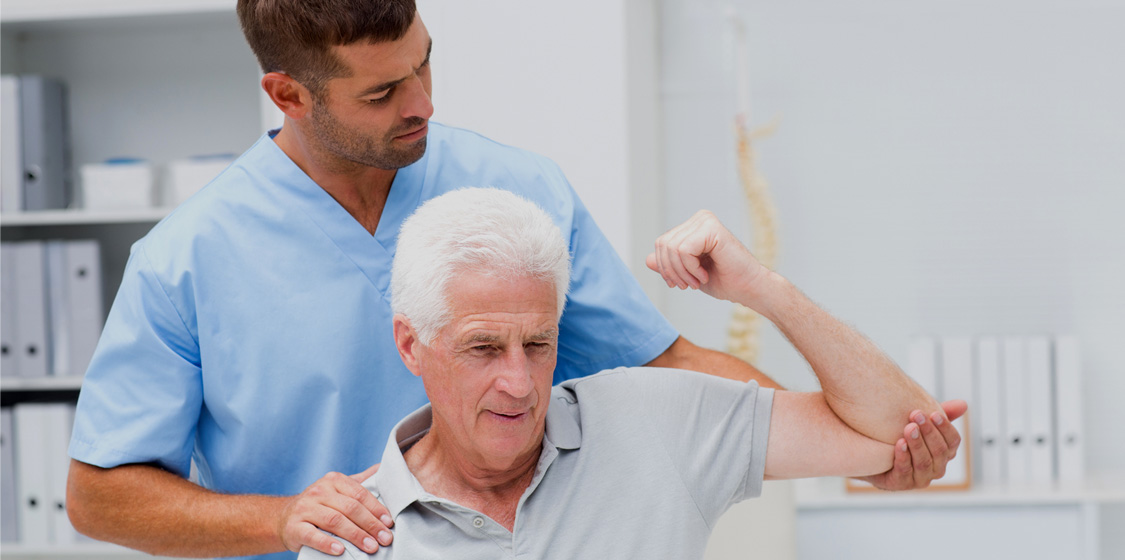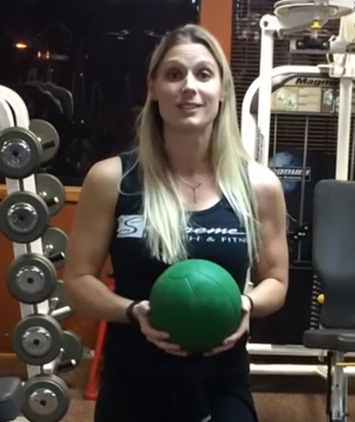
The Benefit of Excercise
Research studies have suggested that exercise is beneficial for reducing symptoms and maximizing function in persons with HD. Maintaining a healthy heart is important to the health of all persons, no matter their disability. Persons with HD should engage in aerobic activities ideally for at least 150 minutes a week. Walking is a good aerobic exercise and still possible for the person in the middle stage of HD to perform. If available, stationary bikes are an excellent means of providing aerobic activity. Care should be taken with bikes that require the rider to step over a bar and lift themself up to the seat. A person with HD is often unable to balance on one leg to step over the bar and so is likely to fall if asked to mount this type of bike. It is easier to climb on and off a bike with a very low center bar and a seat at thigh height or a reclining bike with a standard chair seat that swivels.
Active Range of Motion (AROM) Exercises
A person with HD may develop muscle and joint contractures (abnormal shortening of muscles that restrict joint movement) despite their choreic movements. To prevent contractures, active range of motion (AROM) exercises in which the person with HD moves arm and leg joints through their full range of motion should be performed daily and should focus on straightening the joints. AROM exercises should be done while the person with HD is lying down or while seated in a supportive chair so that the person can maintain their balance with minimal effort while attempting to move their arms and legs to the ends of movement at joints. By the middle and late stages, active movements are often limited to very small ranges of motion; thus caregivers may need to manually help the person move through the full joint range of motion. Caregivers should not force movement of a joint; instead they should gently and slowly move the joint through its full range. If the person with HD says a movement hurts then stop the movement before causing pain.
A person with HD often becomes weaker in the middle stage of the disease. Activities or exercises to maintain strength should be provided. The use of weights is typically not feasible given other problems such as chorea and difficulty holding a muscle contraction. Chorea can cause a person with HD to strike themselves with weights or with weighted arms or legs. At this stage, a functional strength-training program is most appropriate. For leg strengthening, have the person with HD stand up and sit down from a firm, stable chair 10 times (or as many times as they can if the person cannot do 10 times). Repetitive sit to stand transfers can be quite beneficial both for increasing leg strength and improving function. Persons with HD have difficulty maintaining their weight and exercise programs can help to improve appetite but should be kept at a level that won’t lead to even more weight loss. Functional activities such as lifting objects onto shelves help maintain arm strength. Having the person with HD push and pull a wheelchair or other wheeled object can help strengthen back and chest muscles. Adding weight to the wheelchair or wheeled object is a way to ensure that this activity provides enough resistance to be beneficial.
Balance Problems
Balance problems that start early in the disease can make it difficult for a person with HD to stand with feet close together or balance on one foot and increases their fall risk. By the middle stage, excessive trunk movements can also put a person with HD off balance. Additionally, persons with HD lack insight and therefore do not understand that they are at high fall risk and don’t modify their movements to ensure their safety. To improve balance, have the person with HD stand in front of a counter with their feet together and try to balance without holding on to the counter. If the person is able to do this then have them add head turns, arm movements up and down, or closing the eyes while holding the same position. These exercises can be further progressed by repeating the same exercises while the person stands on a soft surface such as foam or the person stands on one leg. The person can also practice walking forward and backward beside a counter placing one foot in front of or behind the other to challenge their balance.
Improving Quality of Life in HD Through Excercise and Healthy Living
A presentation on the importance of excercise in HD by Danny Bega, MD, MSCI, Assistant Professor of Neurology, Director Northwestern HD Center of Excellence, Northwestern University Parkinson’s Diseaase & Movement Disorders Center at the 2017 HDSA National Convention in Schaumburg, IL.
HD Workout Tips With Shana Verstegen Video Series
 Shana Verstegen graduated from the University of Wisconsin with a degree in Kinesiology — Exercise Science. She is a fitness director, personal trainer and group exercise Instructor in Madison, Wisconsin. She is a Master Instructor for TRX Training and the American Council on Exercise. Attracted to unique sports, Shana is a six-time world champion women’s professional log roller and boom runner. She has been featured on ESPN, ABC Wide World of Sports, The Outdoor Life Network, and the Travel Channel among others.
Shana Verstegen graduated from the University of Wisconsin with a degree in Kinesiology — Exercise Science. She is a fitness director, personal trainer and group exercise Instructor in Madison, Wisconsin. She is a Master Instructor for TRX Training and the American Council on Exercise. Attracted to unique sports, Shana is a six-time world champion women’s professional log roller and boom runner. She has been featured on ESPN, ABC Wide World of Sports, The Outdoor Life Network, and the Travel Channel among others.
Having lost her mother to HD, Shana is a national spokesperson for the Huntington’s Disease Society of America, and has appeared in many news stories, print ads, and public speaking venues to raise awareness about HD. In conjunction with HDSA, she has created a series of excersise videos specifically for people with HD. Click the link below to view the HD Workout Tips with Shana Verstegen YouTube channel.
CLICK HERE TO VIEW HD WORKOUT TIPS WITH SHANA VERSTEGEN
Further Reading
A Caregiver Guide for HD Families
Topics such as occupational and physical therapies when caregiving for a person with Huntington’s disease are covered. Click here to download
Please Note: All of the above articles, presentations and resources are for informational purposes only. HDSA encourages all to consult with their primary care provider, neurologist or other healthcare provider about any advice, exercise, medication, treatment, nutritional supplement or regimen that may have been mentioned anywhere on this site.

